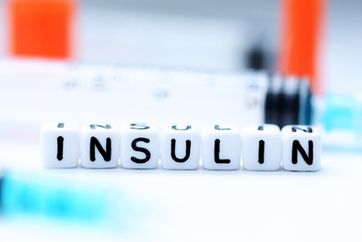‘Patch-like’ basal-bolus insulin device improves glycemic response in type 2 diabetes
SAN FRANCISCO — Adults with type 2 diabetes inadequately controlled with basal insulin therapy alone experienced an improvement in HbA1c and a reduction in total daily basal insulin dose when prescribed a wearable basal-bolus insulin delivery device for 5 months, according to data presented at the American Diabetes Association Scientific Sessions.

“When insulin therapy is required, the ultimate goal is to mimic the normal insulin response in both the fasting and postprandial state,” Carla Nikkel, RD, LD, CDE, CDTC, senior director of medical affairs at Valeritas Inc., told Endocrine Today. “Research suggests within a year of initiating basal insulin therapy, the majority of patients will require intensification to basalbolus therapy to maintain or achieve glycemic targets. To lessen the burden of basal-bolus therapy, a stepwise intensification approach of adding one insulin injection at a time is typically recommended. This approach has proven efficacious, however, [it] may prolong the glycemic burden for the patient.”
In a retrospective analysis, Nikkel and colleagues evaluated electronic medical records of 73 adults with type 2 diabetes inadequately controlled with basal insulin therapy who were prescribed a wearable insulin delivery device (V-Go, Valeritas), described by the company as a patchlike, 24hour basalbolus insulin device designed to serve as an alternative to intensification with multiple daily injections. Patients in the cohort had a mean diabetes duration of 12 years, a mean baseline HbA1c of 9.6% and a mean baseline total daily basal insulin dose of 0.53 U/kg, with 93% of patients using concomitant antihyperglycemic medications.
After 5 months, patients using the device experienced a mean HbA1c reduction of –1.3% (P < .0001) and a mean reduction in total daily basal insulin dose of –22 U per day (P < .0001).
Severe hypoglycemia incidence in the cohort fell from 10% to 3% during the study period, according to researchers.
“With use of VGo, glycemic control was significantly improved and fewer patients reported
hypoglycemia compared to their prior regimen,” Nikkel said. “It is important to note that the prescribed total insulin dose did not increase with VGo compared to baseline, supporting the importance of addressing both fasting and prandial glucose control to maximize insulin therapy.”
In a separate retrospective analysis conducted in older adults, Nikkel and colleagues analyzed EMR data from 54 patients aged at least 65 years with type 2 diabetes wearing the device for a mean duration of 5 months, evaluating changes in HbA1c, body weight, total daily insulin dose and prevalence of hypoglycemia. Within the cohort, mean age was 71 years, mean baseline HbA1c was 9.5%, mean baseline body weight was 99 kg and mean total daily insulin dose was 64 U per day, with 83% prescribed concomitant antihyperglycemic agents.

Researchers documented baseline hypoglycemia in 36% of patients.
“An older population poses many challenges when it comes to selecting therapeutic interventions [that] provide clinical benefit without increased safety risk,” Nikkel said. “Basalbolus insulin therapy, when warranted in older adults, is challenging due to the complexities of the regimen and the higher risk of adverse consequences associated with hypoglycemia in this population.”
During 5 months of follow-up, mean HbA1c decreased by –1.5% (P < .0001) and mean total daily insulin dose decreased by –9 U per day (P = .107). Mean body weight increased by 0.65 kg (P < .208), according to researchers. The researchers also noted a markedly decreased prevalence of overall and severe hypoglycemia.
“Findings from this analysis demonstrate that, in an older population with type 2 diabetes, the use of VGo to deliver basalbolus therapy improved glycemic control while decreasing the prevalence of hypoglycemia, which is noteworthy in an older adult population with type 2 diabetes,” Nikkel said. – by Regina Schaffer
Reference:
Zeidan T, et al. 1044-P and 1045-P. Presented at: American Diabetes Association 79th Scientific Sessions; June 7-11, 2019; San Francisco.
Disclosure: Nikkel reports she is an employee and stockholder of Valeritas Inc.






